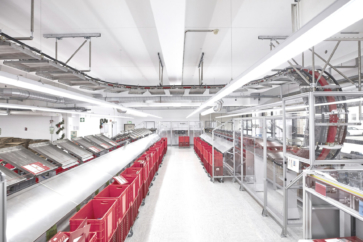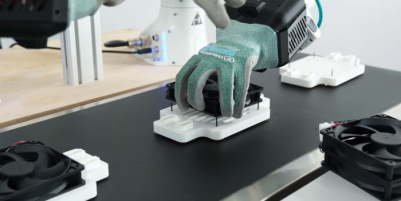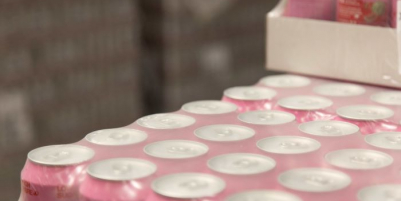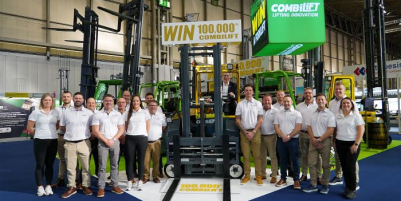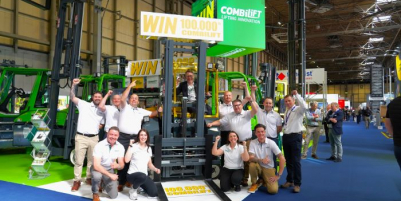-
AI startup Onton raises $7.5M to reinvent the way the world discovers and decides what to buy - November 26, 2025
-
Forklift Market Positions for Recovery as Confidence Expected to Build from 2026 - November 26, 2025
-
PROCare achieves 300% order capacity increase and 99% picking accuracy with Forterro’s ERP solution, Orderwise - November 26, 2025
-
DHL boosts operational efficiency and customer communications with HappyRobot’s AI Agents - November 25, 2025
-
STENA LINE TEAMS UP WITH CAMERA TELEMATICS TO DRIVE SAFETY IMPROVEMENTS AT IRISH SEA PORTS - November 25, 2025
-
Another design award for Toyota’s lithium-ion Traigo_i counterbalanced forklift - November 21, 2025
-
Stuut Technologies Raises $29.5 Million Series A Led by Andreessen Horowitz to Automate Accounts Receivable Work - November 20, 2025
-
INCREASED DIGITAL INVESTMENT REQUIRED TO KEEP PACE WITH 2026 CUSTOMS CHANGES - November 19, 2025
-
FULFILMENT SOLUTIONS FOR SPORTS MERCHANDISE: KEEPING OUR EYE ON THE GAME - November 19, 2025
-
COMPLEX, COSTLY & CONFUSING – THE END OF DE MINIMIS - November 19, 2025
How can parcel carriers expand capacity when challenged by dwindling labour resources, rising costs and an aging estate of ‘awkward’, regional depots ill-suited to conventional automation? Darcy de Thierry, Managing Director of Ferag UK sets out a way forward.
There seems no limit to the growth of packet and parcel traffic. Although, according to the 2023 Parcel Shipping Index issued by mailing equipment supplier Pitney Bowes, UK parcel volumes fell back by 5% in 2022 from the Covid-era peak, that still represented 5.1 billion parcels sent, received or returned. The index predicts a 1% compound annual growth over 2023-2028, to reach 5.6 billion. A simple 1% may not sound a lot, but that is over 50 million extra parcels each year.
This boom does not, however, represent easy money for post and parcel operators. Although the UK market is highly consolidated – Royal Mail, Hermes (now Evri), Amazon Logistics, DHL and UPS accounting for 70% of parcel shipments – that still leaves 30% with smaller and specialist companies. According to Deloitte, disruptive new entrants are raising challenges to market share and profitability.
Meanwhile, customer demands and expectations for later cut-offs, next or same day delivery, convenience and reliability increase, as do costs, particularly with regards property rental, fuel, and labour. Also, the minimum wage has risen again, not that postal companies can attract labour to work fairly monotonous graveyard shifts at that level.
Deloitte, suggests that postal companies should invest in ‘innovation and digital capabilities’, along with strengthening ‘core logistics capabilities’ – which would include technologies such as advanced sortation systems.
It is surprising the extent to which even in the ‘big five’, and especially in regional and ‘last mile’ sorting depots, there is still considerable dependence on manual sorting. It may be that the return on investment in automating these processes has, in the past, been difficult to achieve. It may also be that many of these depots are in old or repurposed buildings that had been thought to be unsuitable to accommodate automation. But with labour increasingly difficult to source, and the cost of labour rising, it may be time to think again. Without automation of some form, how else will the sector grow capacity to cater for increased volumes and higher customer expectations?
There is considerable scope for profitable automation, especially in these smaller depots, with throughputs up to say 10,000 items an hour. Systems with tight-turning capabilities, such as Ferag’s Denisort range, could make efficient use of some of the most awkward sites, with trays that accommodate almost any type of parcel – large, small, irregularly shaped, or a mixture, and can be configured to deliver into any combination of chutes, roll cages, totes and other receptacles.
A key feature of Denisort is the compact ‘3D’ nature of the system, which can negotiate tight radii, inclines and declines – helically if necessary. Space can be saved by bringing the tray return back under the loading positions, the run can swerve around inconvenient corners or pillars, and often reach much closer to loading docks at the most inaccessible point in the building.
Products are placed on trays with enclosed sides (securing, for example, cylindrical shapes, and preventing items from dislodging under cornering), which can tilt, and then flap open, on the appropriate side to discharge. It is possible to move two trays as a pair to carry longer items. Also, induction of items into the system can be manual or automated.
What’s more, systems can be interfaced with Optical Character Recognition technology. The software monitors chute fill, or, in retail, ‘count down’ the items going to a particular store – ‘three items to come before that tote is complete’, which ultimately can help speed the loading and release of vehicles.
The technology is available to automate older, regional sites – so where is the payback? Most obviously, in reducing the head-count required, both permanent and, importantly, at peaks. And the scope for error and damage is much reduced. A key point is, such machinery must be robust and reliable. Ferag has a long track record for high performance engineering, and uses high specification, tried and tested, materials and components. Attention to engineering excellence keeps energy and operating costs low.
Implementation is fairly quick and simple, too, and systems are eminently scalable and flexible, to cope with increased volumes or changing ways of working. On ergonomics, Denisort systems are noticeably quieter than others – typically below 80dBA.
Ferag has installed systems in difficult and awkward spaces that nonetheless processes 8,500 trays an hour (1,200 trays in the system) with items that measure up to 800mm in length. Other applications feed parcels of up to 7kg weight for 195 sorting destinations at a rate of 10,000 trays per hour. These are quite large-scale installations, but a speedy return on investment can be easily achieved on much smaller systems.
If the parcel sector wishes to keep pace with future growth and higher demands on service performance, then the intelligent application of robust sorters in existing ‘awkward’ buildings may well be the answer.
For more information on Ferag’s automated sorter technology visit:




























